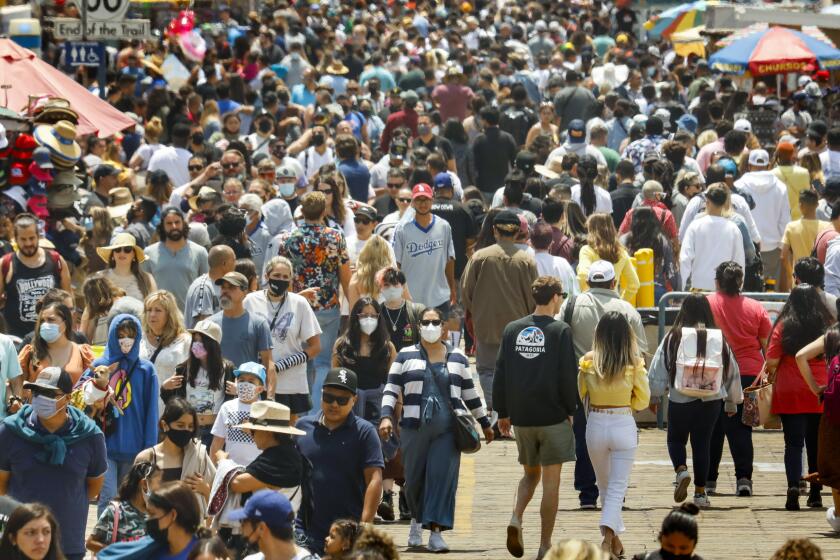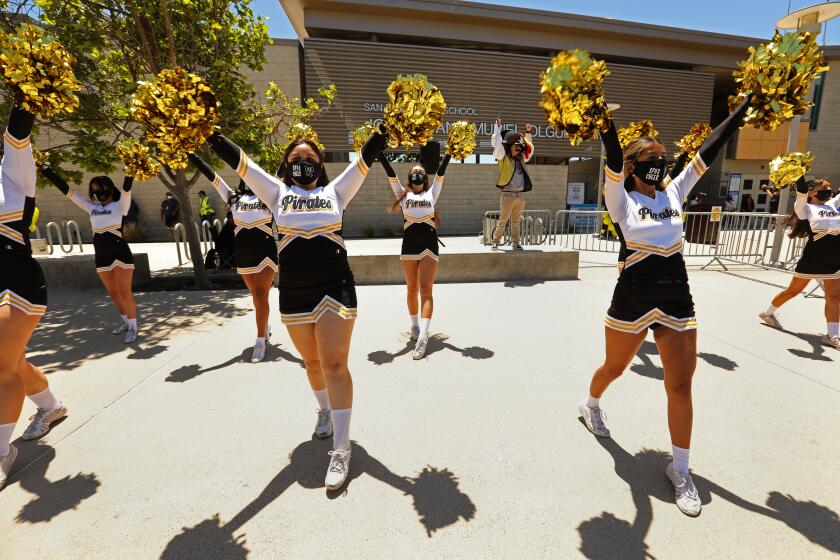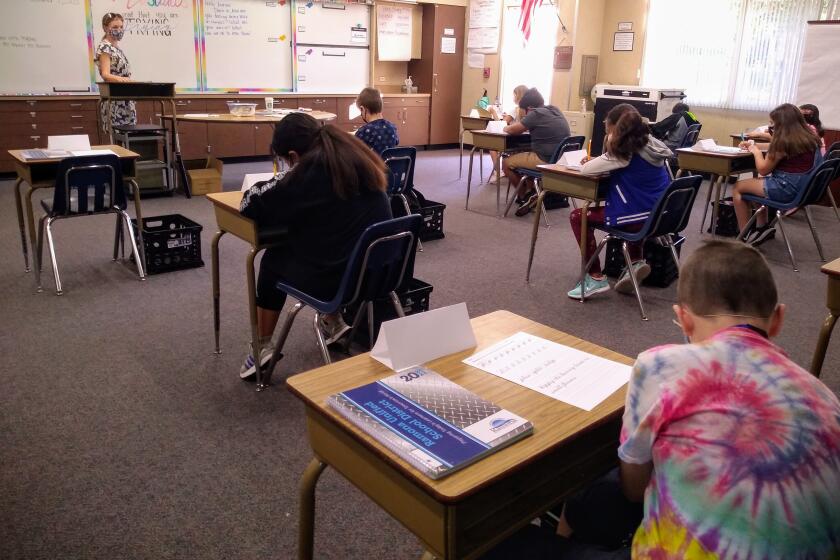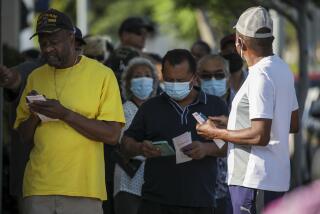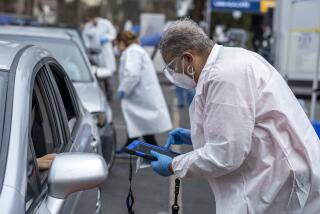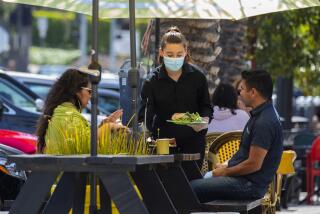In state’s final weekly COVID-19 assessment, more than half of Californians living in yellow tier
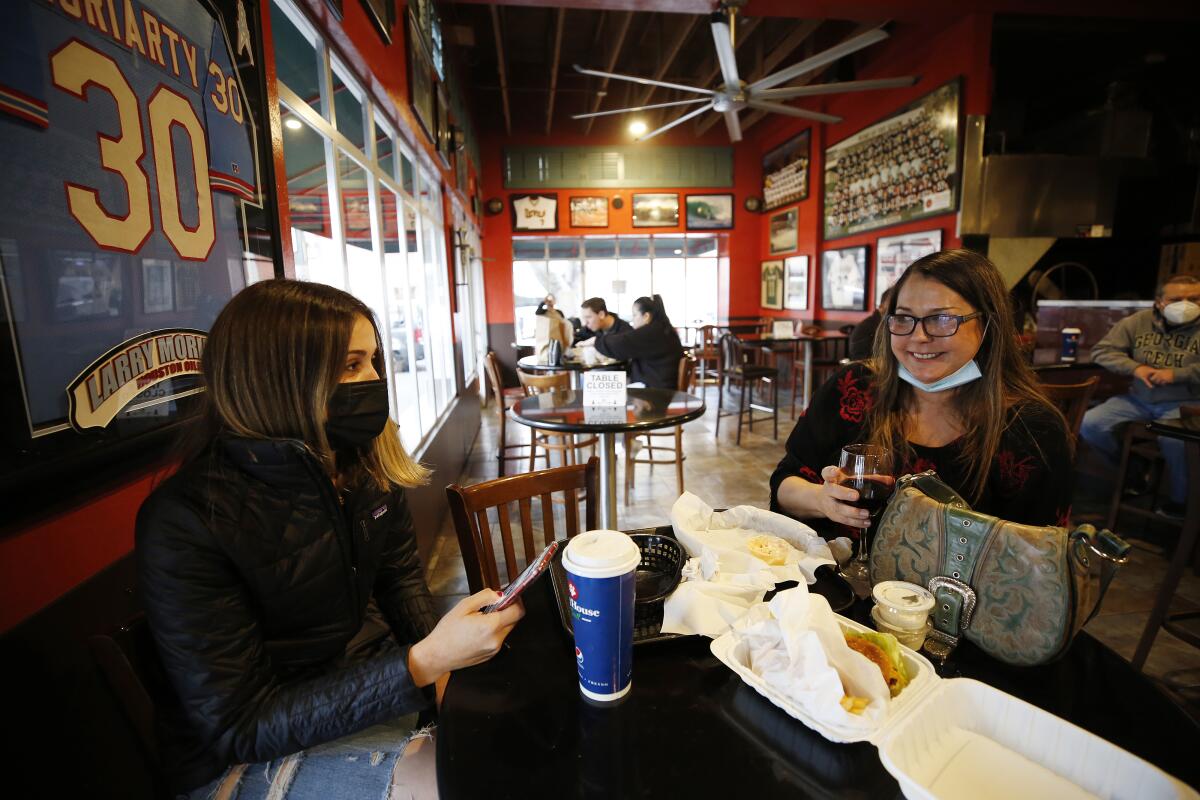
Five more counties — including San Diego — officially moved into California’s least restrictive category this week as part of the final update to the state’s color-coded COVID-19 reopening roadmap.
Although reaching the yellow tier in the state’s blueprint allows businesses and other public spaces to operate more widely than they have in months, the state is gearing up to roll back virtually all coronavirus-related business restrictions next week as part of its long-awaited economic reopening.
Tuesday’s advancements have come late in the pandemic but still indicate progress achieved in California’s battle against the virus.
Los Angeles County Health Officer Dr. Muntu Davis noted Monday that California now had one of the lowest levels of coronavirus transmission in the country.
“This is not an accident,” he said during a briefing. “It is the result of many, many hours invested by countless community leaders in educating people about preventing transmission and working to maximize access to vaccine, as well as the efforts of every single person who continues to make prevention a priority and has gotten the vaccine or shared their vaccination story to help someone else get vaccinated.”
The low coronavirus case rate underscores California’s continued progress toward extinguishing the health crisis a week ahead of its planned reopening.
According to the latest state data, Alameda, Napa, San Diego, San Luis Obispo and Santa Barbara counties all have now reached the yellow tier.
“I commend everyone who has worked hard to help us reach this milestone, and I encourage everyone who is eligible to get vaccinated so we can put this pandemic fully in the past,” Dr. Penny Borenstein, San Luis Obispo County’s health officer, said in a statement.
Additionally, Stanislaus County advanced to the orange tier, the next-least-restrictive rung of California’s reopening ladder.
Once the new tier assignments go into effect Wednesday, more than half of all California residents will live in yellow-tier counties.
San Diego’s advancement means the state’s three most populous counties have reached the final stage of the current reopening strategy — joining Los Angeles and Orange.
“San Diego continues to really perform well as we work our way out of COVID and we return to a very normal way of life — something that, after a very long year, year and a half, I think we should all take a measure of pride in,” county Supervisor Nathan Fletcher said Tuesday.
Under the existing blueprint, counties are sorted into four color-coded tiers based on their rates of new coronavirus cases, adjusted based on the number of tests performed; the rate at which conducted tests come back positive; and a health-equity metric applied to ensure that the positive test rate in poorer communities is not significantly higher than the county’s overall figure.
Getting into the yellow tier, for instance, requires an adjusted daily rate of fewer than 2 new cases per 100,000 people, an overall rate of positive test results of less than 2%, and, within communities hard-hit by the virus, a rate of positive tests below 2.2%.
Counties need to record two straight weeks of qualifying data to advance to a less restrictive tier and have to remain in a tier for three weeks before moving again.
Here are five things to expect as L.A. County fully reopens after COVID-19 restrictions.
Upon reaching the yellow tier, counties can allow a host of business sectors to beef up their operating capacity — including restaurants, gyms, movie theaters, amusement parks, sports venues, card rooms, museums, wineries and breweries.
Bars, which in the orange tier were allowed to accommodate patrons only outdoors unless they served food, can reopen indoors with a maximum capacity of 25% or 100 people, whichever is fewer, with the limit increasing to 37.5% if all guests show proof of full vaccination or a negative test.
Amusement parks and fairs also can expand attendance to 35% of capacity, up from 25% in the orange tier. Visitors must either be California residents or fully vaccinated.
Notably, with temperatures on the rise, water parks can expand to 40% capacity outdoors, up from 25%. Indoor water parks, pools and rides can expand to 25% of capacity, up from 15%.
Indoor seated live events and performances in large-capacity venues — those with seating for more than 1,500 guests — can reach 10% of capacity or 2,000 guests, whichever is less. But if everyone has a negative test or proof of full vaccination, the limit can increase to 50%, up from 35% in the orange tier.
And outdoor seated live events, such as baseball games, can expand to 67% of capacity in the yellow tier, up from 33% in the orange tier. Attendees must live in California or be fully vaccinated.
Are vaccines safe? When can I get a booster dose? Do I have to wear a mask? We’ve answered hundreds of newsletter readers’ questions. Here’s an archive.
This week marks the ultimate update to the state’s tiering system, which was unveiled in late August to guide California’s reopening in the aftermath of the summer coronavirus surge.
In the months that followed, the regular release of new assessments — “Tier Tuesdays,” as they were sometimes called — were closely watched, with each new batch of data carrying the promise that a county could further unlock its economy.
But the framework could not withstand the fury of the state’s devastating fall-and-winter COVID-19 spike.
In mid-November, officials said they were pulling an emergency brake, dramatically rolling back reopenings and placing much of the state into the purple tier — the strictest category.
When that proved insufficient to blunt the virus’ rampage, the state took an even more drastic step in December: suspending the framework in favor of a new stay-at-home order tied to regional strains on critical care services.
The last of those orders was lifted in late January, and counties have since steadily marched into less restrictive tiers as their coronavirus metrics have improved.
Such moves were made easier when California officials announced a pair of goals aimed at boosting equitable distribution of COVID-19 vaccines.
Once 2 million doses were administered in targeted communities statewide — those in the lowest quartile of a socioeconomic measurement tool called the California Healthy Places index — the state relaxed the case rate threshold necessary to escape the purple tier.
And when 4 million doses were doled out to these lower-income communities, state officials similarly eased the thresholds for entering the orange and yellow tiers.
Reaching the yellow tier used to require an adjusted daily new case rate below 1 per 100,000 people, compared with the current requirement of less than 2.
Though seemingly slight, the practical effects of the tweak have been massive. As of last week, only nine of California’s 58 counties would have met the former yellow-tier threshold — compared with the 24 that now fall under that category.
It is possible for schools to reopen safely in places where coronavirus is under control as long as certain steps are taken to mitigate the risks.
Come June 15, though, Californians will awake to a new world, one where many restrictions that have become part of daily pandemic life will no longer be in place.
Effective that day, coronavirus-related capacity restrictions and physical distancing requirements at almost all businesses and other institutions will be lifted, and people who are fully vaccinated will be allowed to go without masks in most situations.
There are some caveats. Counties may ultimately opt to keep some restrictions in place, and individual businesses may have their own rules — either self-adopted or imposed by state workplace safety regulators.
Gov. Gavin Newsom has also said that California’s COVID-19 state of emergency order — which gives him and health officials broad authority to temporarily impose new rules and restrictions — will remain in place beyond next Tuesday.
“I’m mindful of the work that we’ve done, the progress we’ve made in the state as it relates to mitigating the spread and transmission rates of this disease,” he said last week.
But given that history has shown the pandemic’s trajectory can change quickly, Newsom added that “we’ve never said that we were not going to consider some modifications post-June 15.”
More to Read
Sign up for Essential California
The most important California stories and recommendations in your inbox every morning.
You may occasionally receive promotional content from the Los Angeles Times.
